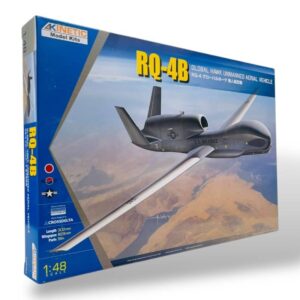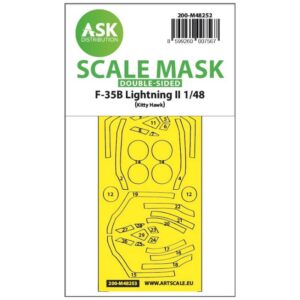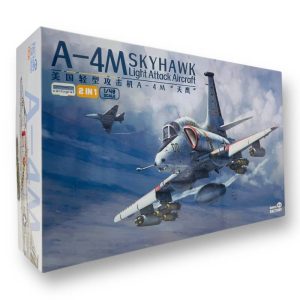article
Curtiss P-36 Hawk
The Curtiss P-36 Hawk, also known as the Curtiss Hawk Model 75, was an American-designed and built fighter aircraft of the 1930s and 1940s. Contemporary to both the Hawker Hurricane and the Messerschmitt Bf 109, it was one of the first of a new generation of fighter aircraft; a sleek monoplane design using extensive metal construction and powered by a powerful radial engine.
Perhaps best known as the predecessor to the Curtiss P-40 Warhawk, the P-36 saw little combat with the United States Army Air Forces during World War II. However, it was the fighter most extensively and successfully used by the French Armee de l’air during the Battle of France. The P-36 was also ordered by the Dutch and Norwegian governments, but did not arrive in time to see action before both were occupied by Nazi Germany. The type was also built under license in China, for the Republic of China Air Force, and in British India, for the Royal Air Force (RAF) and Royal Indian Air Force (RIAF).
Axis and Allied air forces also made significant use of captured P-36s. After the fall of France and Norway in 1940, several dozen P-36s were captured by Germany and transferred to Finland. These aircraft saw extensive action with the Ilmavoimat (Finnish Air Force) against the Soviet Air Force. The P-36 was also used by the Vichy French Air Force in several minor conflicts. In one of these, the Franco-Thai War of 1940–41, P-36s were used by both sides.
From mid-1940, some P-36s en route to France and the Netherlands were diverted to Allied air forces in other parts of the world. Hawks ordered by the Netherlands were diverted to the Dutch East Indies and later saw action against Japanese forces. French orders were taken over by the British Commonwealth air forces, and saw combat with both the South African Air Force (SAAF) against Italian forces in East Africa, and with the RAF over Burma. In the Commonwealth, the type is usually referred to as the Curtiss Mohawk.
With approximately 1,000 aircraft built by Curtiss itself, the P-36 was a major commercial success for the company. It also became the basis for not only the P-40, but two other, unsuccessful prototypes: the P-37 and the XP-42.
Design and development:
The Curtiss Model 75 was a private company venture, designed by former Northrop Aircraft Company engineer Don R. Berlin. The first prototype, built in 1934, featured an all-metal construction with fabric-covered control surfaces, a Wright XR-1670-5 radial engine producing 900 horsepower (670 kW), and standard United States Army Air Corps armament of a .30 in (7.62 mm) and a .50 mm machine gun. Also characteristic of the era was the complete absence of cockpit armor or self-sealing fuel tanks. The distinctive landing gear, which rotated 90; The folding of the main wheels flat on the thin trailing edge of the wing, which rested on the lower ends of the main gear knees when retracted, was a design patented by Boeing for which Curtiss had to pay royalties.
The prototype first flew on 6 May 1935, reaching 281 mph (452 km/h) at 10,000 ft (3,000 m) during early test flights. On 27 May 1935, the prototype was flown at Wright Field, Ohio, to compete in the USAAC fly-off for a new single-seat fighter, but the competition was delayed because the Seversky Inlet crashed en route. Curtiss took advantage of the delay to replace the unreliable engine with a 950 hp (710 kW) Wright XR-1820-39 Cyclone and rework the fuselage, adding the characteristic scalloped rear windows for improved visibility. The new prototype was designated the Model 75B with the R-1670 version retroactively designated the Model 75D. The fly-off finally took place in April 1936. Unfortunately, the new engine failed to deliver its rated power and the aircraft reached only 285 mph (459 km/h).
Although the competing Seversky P-35 was also less efficient and more expensive, it was declared the winner and a contract for 77 aircraft was awarded. However, on 16 June 1936, Curtiss received an order from the USAAC for three prototypes, designated the Y1P-36. The USAAC was concerned about the political unrest in Europe and Seversky’s ability to deliver the P-35s on time, and therefore wanted a backup fighter. The Y1P-36 (Model 75E) was powered by a 900 hp Pratt & Whitney R-1830-13 Twin Wasp engine, and the swept-back rear canopy was further enlarged. The new aircraft performed so well that it won the 1937 USAAC competition for an order for 210 P-36A fighters.
The aircraft’s extremely low wing loading of just 23.9 lb/ft2 gave it excellent turning performance, and its high power-to-weight ratio of 0.186 hp/lb gave it excellent climb performance for the time. The single-speed turbofan was a serious drawback at high altitudes. Compared to the later Allison-powered P-40, the P-36 shared the P-40’s characteristics of excellent high-speed handling, improved roll rate at high speed, and relatively light high-speed controls. However, it lacked power, affecting its acceleration and top speed, and did not accelerate into a dive like the P-40.
Business History:
United States
Argentina
Brazil
Peru
British Commonwealth
China
Norway
Finland
France
Portugal
Iran
Dutch East Indies
Siam Thailand
P-40 Warhawks of 80th Fighter Group in the CBI “Miss Frances III”. Nagaghali AB Assam India, May 1944






